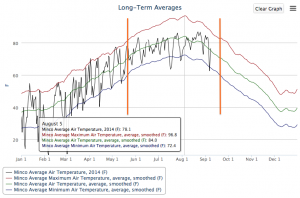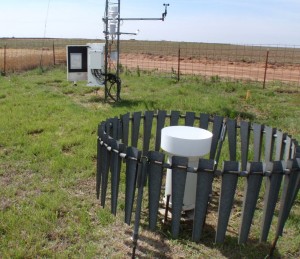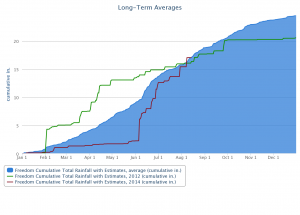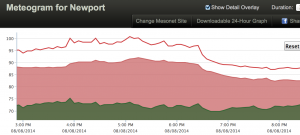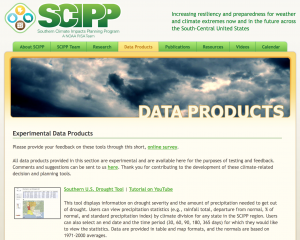So when does fall begin? From a farming, ranching, gardening standpoint, it’s when air temperatures drop into mild ranges and water demand tapers off. It’s when plants respond with their fall flush of growth. Animals respond by playing more. Livestock gain more. And the kids quit asking if we’re there yet!
If we just consider minimum air temperature as a season mark, we could turn to a long-term averages graph for our dates. This graph from Minco, in central Oklahoma, has two orange lines that highlight the average dates when the minimum air temperature crosses 60 degrees F. We could use these to mark the beginning of summer and the beginning of fall.
[Full site: mesonet.org / weather / past data & files / long-term averages - graphs]
